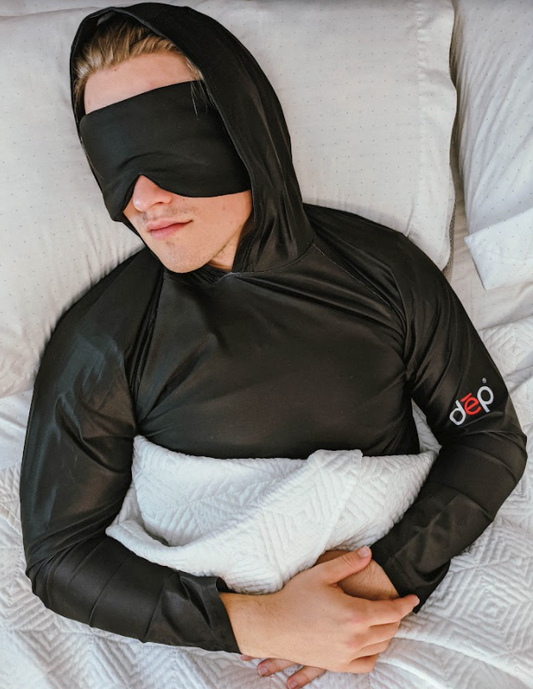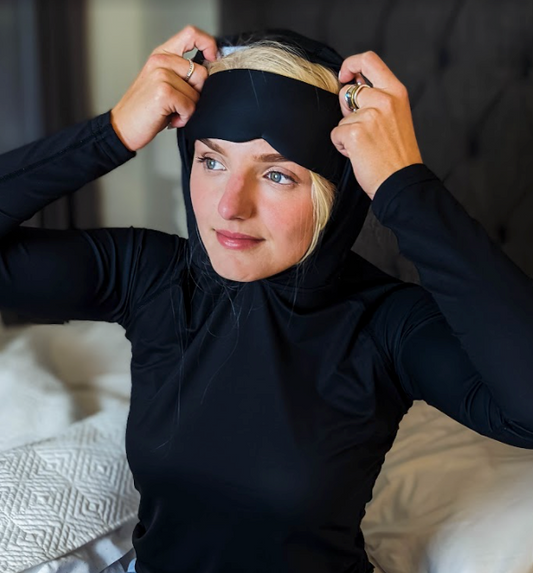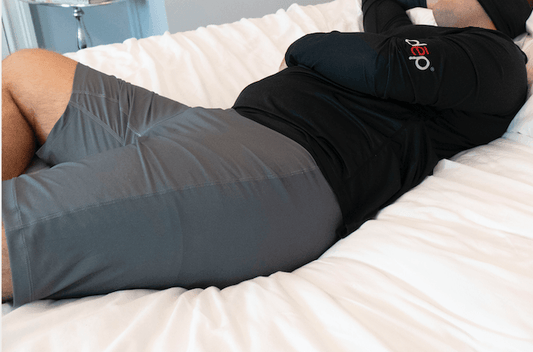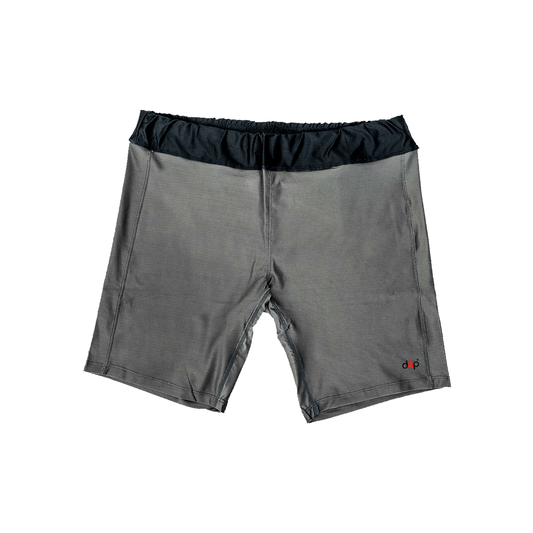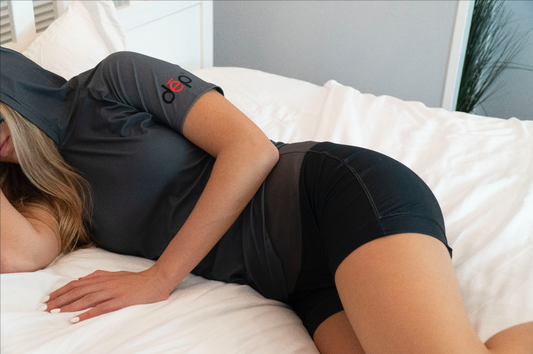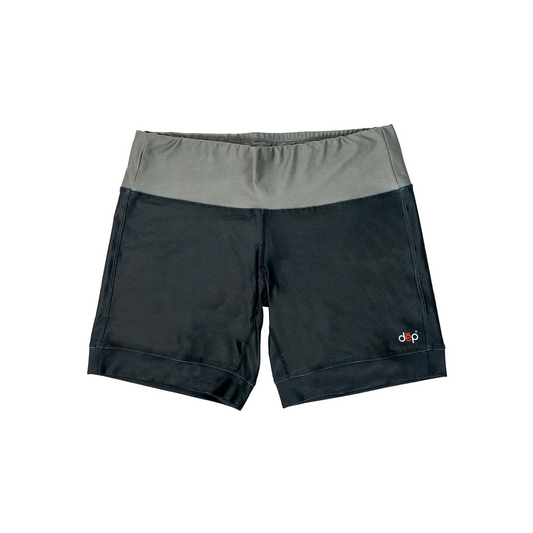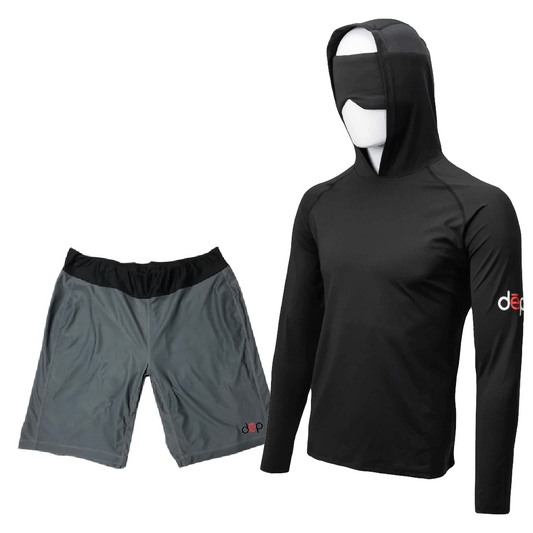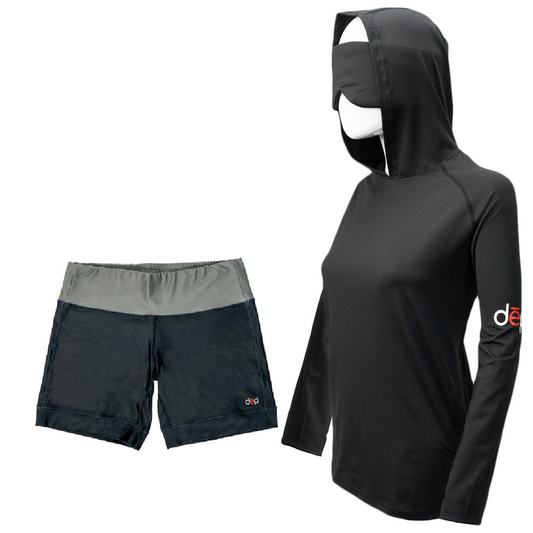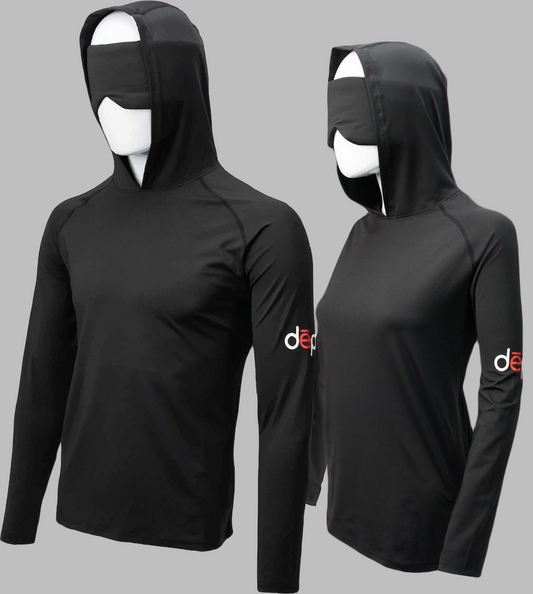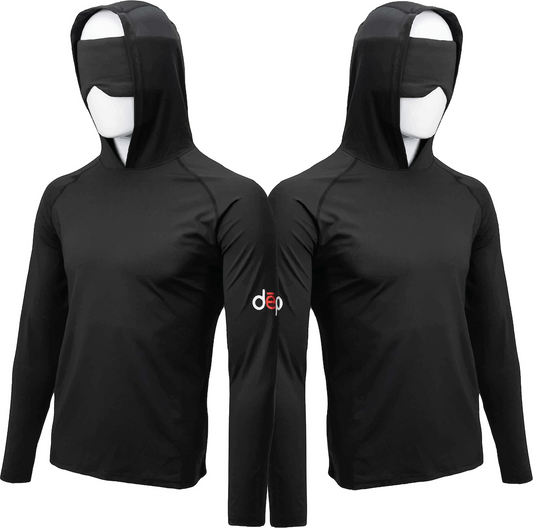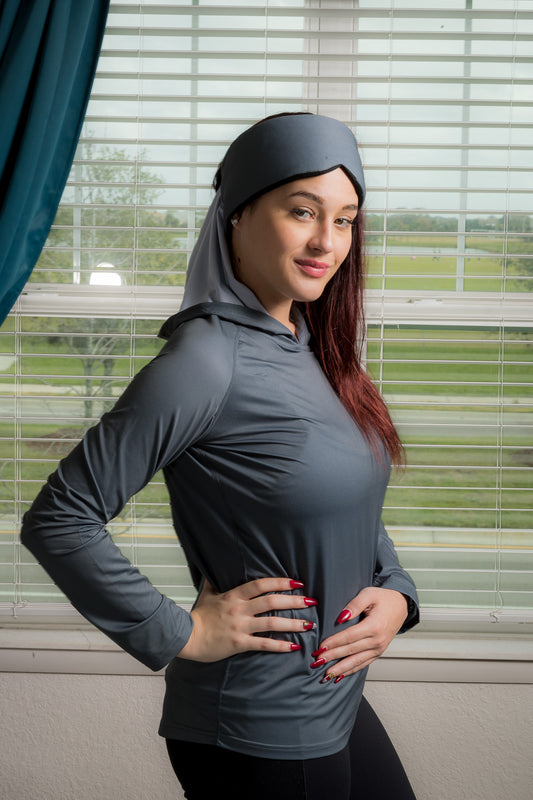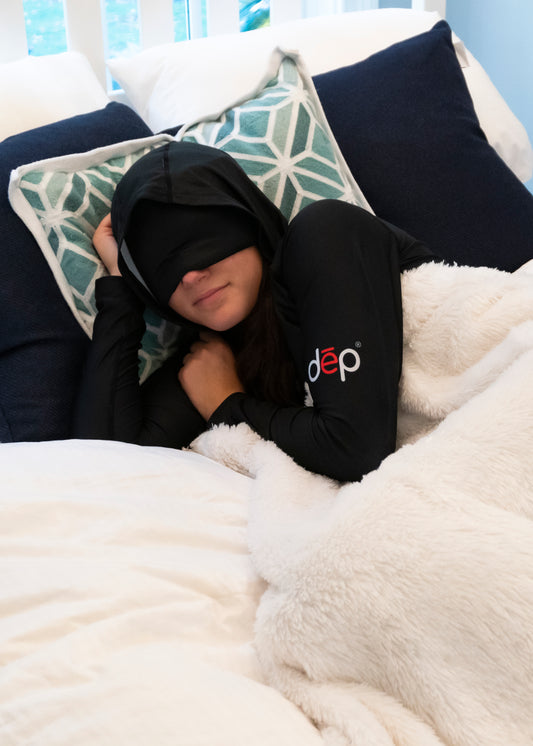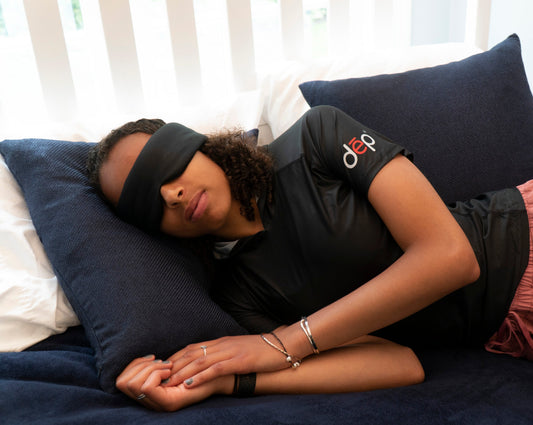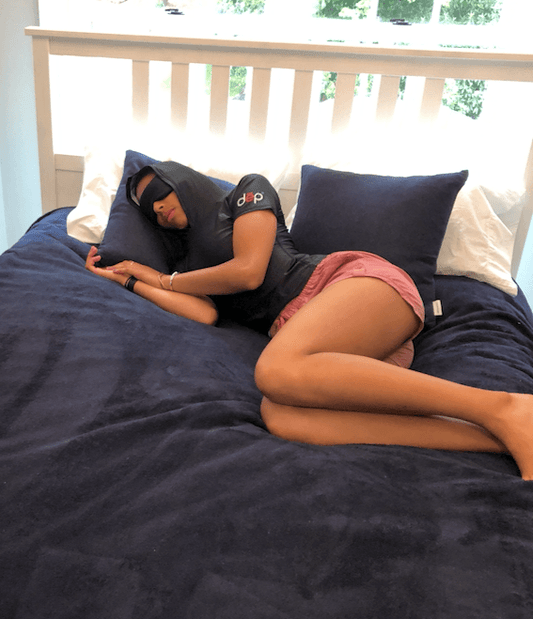Collection: The Best Pajamas for Students
Dorm life is loud, bright, and rarely sleep-friendly.
Dēp Slēpwear’s dorm pajamas give sleep-deprived students a fighting chance against roommate snoring, hallway chaos, and pre-exam jitters. Engineered for better sleep in shared-living spaces, Dēp Slēpwear makes the perfect dorm PJs that actually help you rest when you need it most.
Put Dēp Slēpwear to the test. Our 30-day Better Sleep Guarantee makes it risk free.
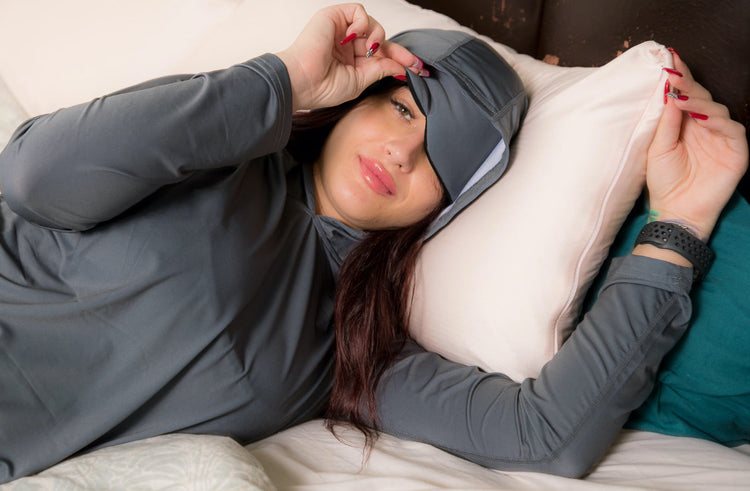
The smart pajamas choice for students
-
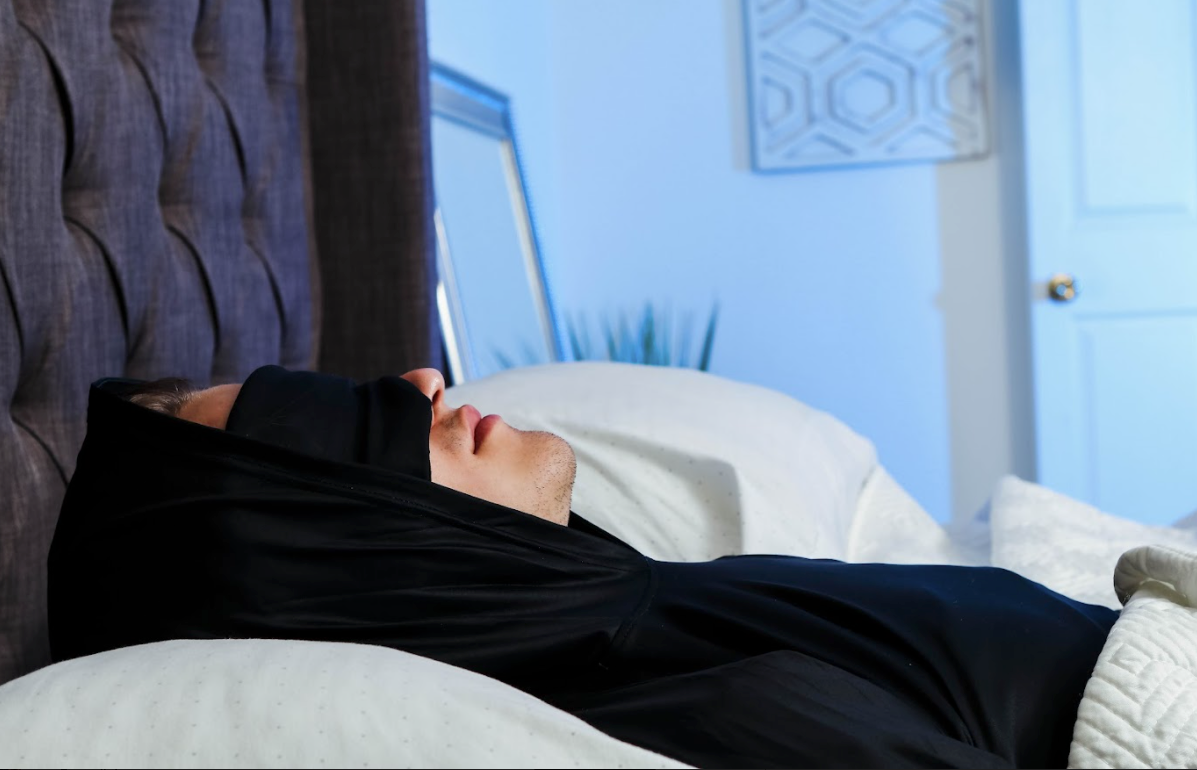
Peace & Quiet
The built-in sleep mask blocks all light and covers ears to create a dark, quiet, peaceful space so you can get quality sleep even amidst the campus chaos.
-
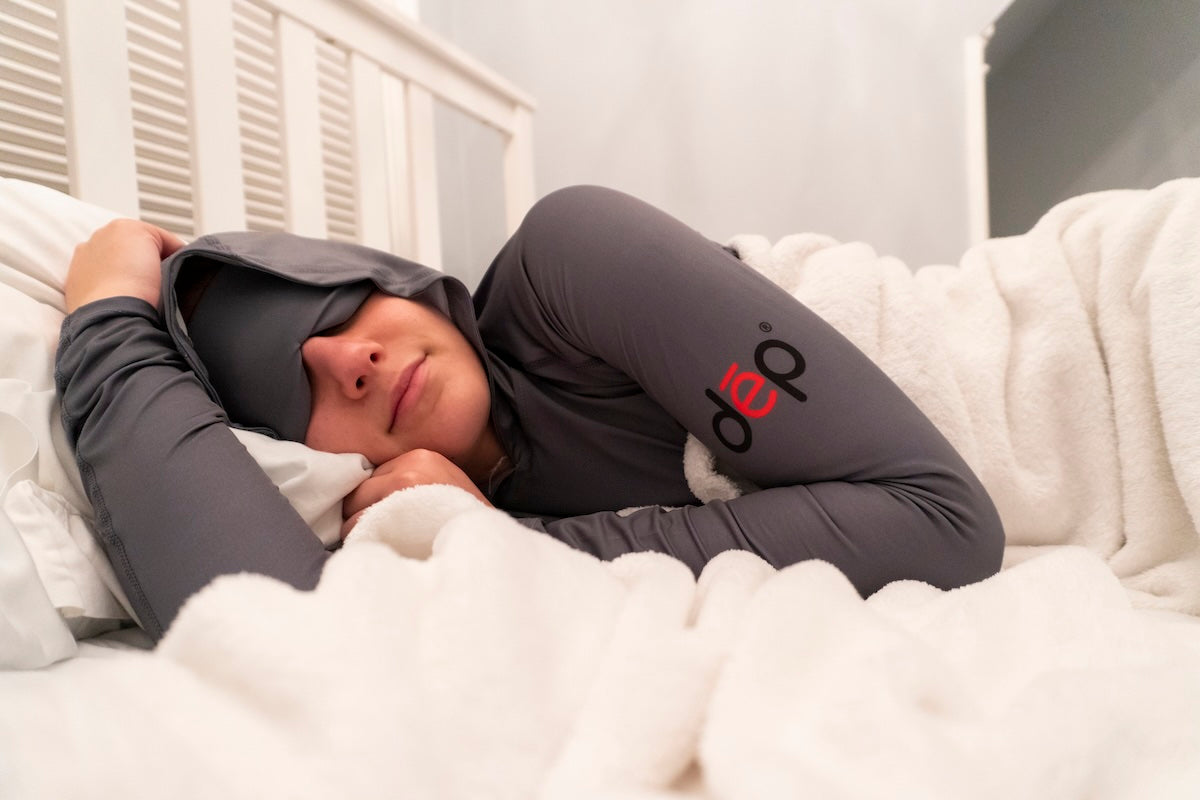
Cool Comfort
Breathable, sweat-wicking materials keep your body temperature just right for sustained sleep whether you're curled up in bed or cat napping on the quad.
-
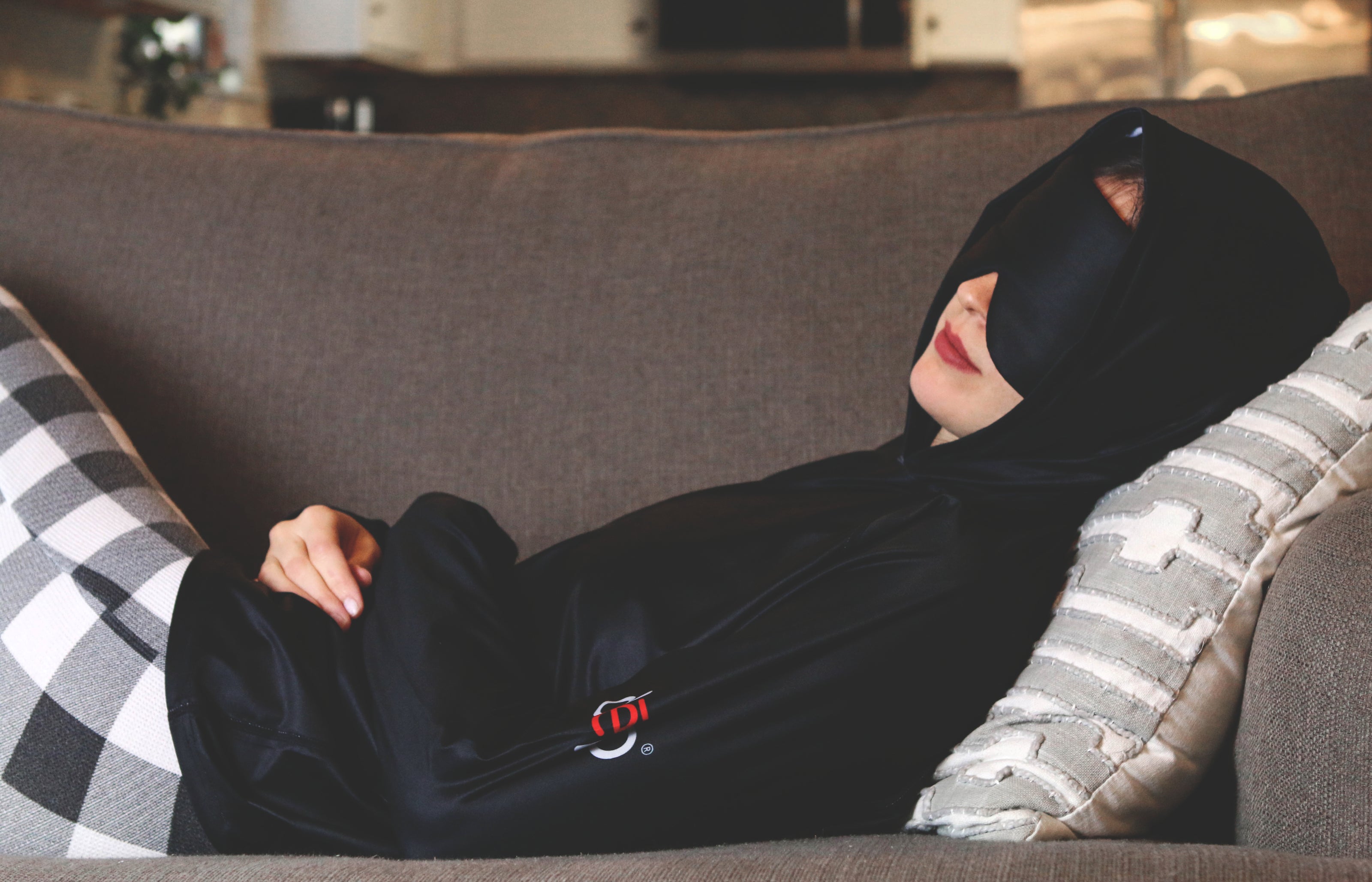
Lounge Ready
Engineered as serious sleepwear, this is versatile gear that's just as comfortable in the caf and lounging before and after a busy day on campus.
-
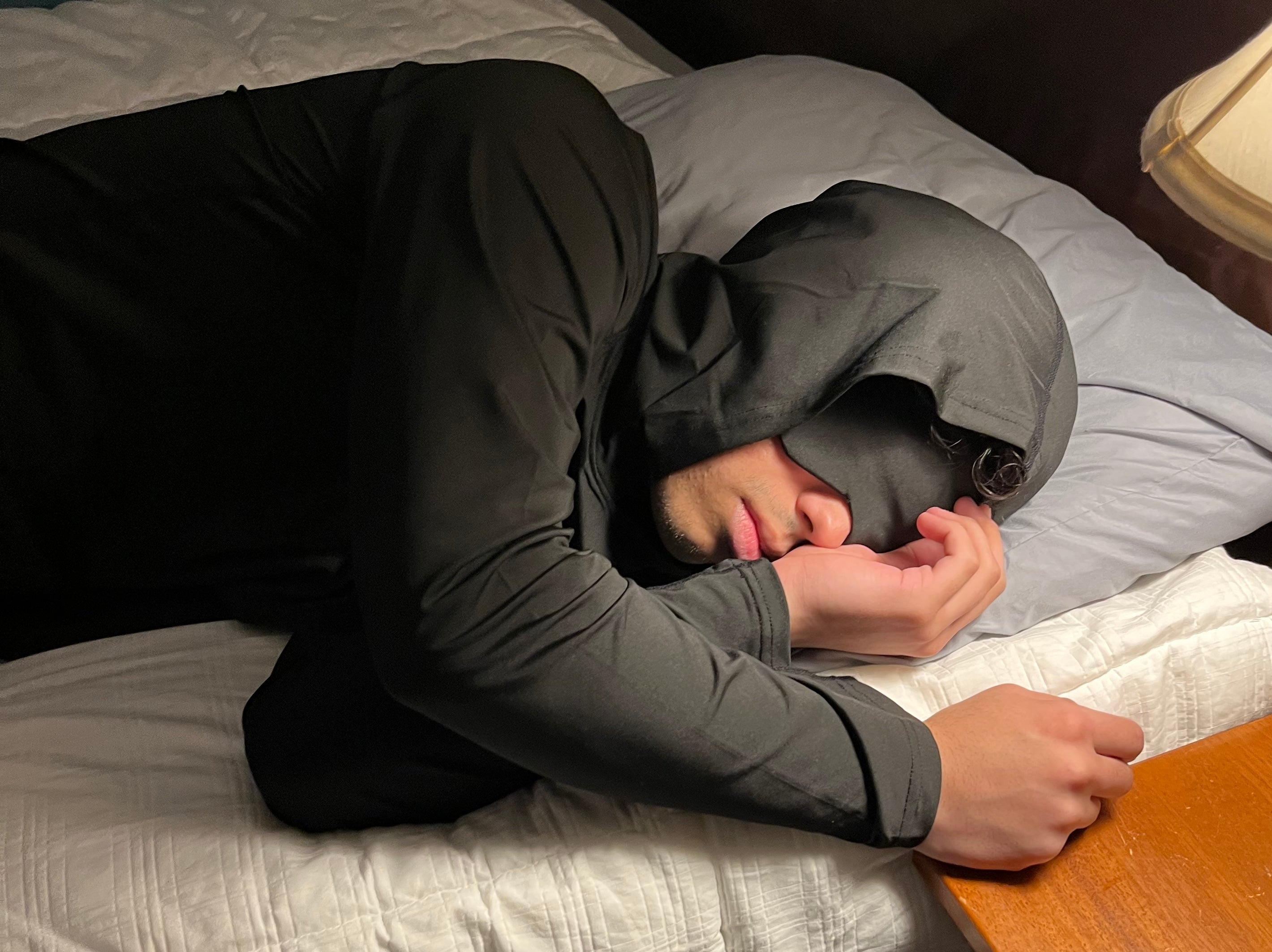
Serious About Sleep
Sleep has a very direct impact on scholastic, athletic, social, and emotional success. So you owe it to yourself and those around you to commit to quality sleep.
"The Sleep Hoodie is required gear for blocking out my roomate's ... what's he even doing over there?!"
Dēp Slēpwear's performance student pajamas feature a patented design that's proven to help stressed out students achieve better sleep quality in their dorm rooms and off-campus apartments. Unlike ordinary sleepwear, these cooling pajamas are engineered with advanced moisture-wicking fabrics, and are just as comfortable to wear (and be seen in!) in bed or around campus. The movement-friendly design, and innovative features help create the perfect sleep environment wherever and whenever you are ready to rest.
-
Patented Sleep Hoodie with Sleep Mask for Better Sleep
Regular price $99.00 USDRegular price -
Men's Lightweight Sleep Shorts
Regular price $49.00 USDRegular price -
Women's Lightweight Sleep Shorts
Regular price $49.00 USDRegular price -
Men's 2.0 Sleep Uniform - SAVE 15%
Regular price $125.00 USDRegular price -
Women's 2.0 Sleep Uniform - SAVE 15%
Regular price $125.00 USDRegular price -
Unisex Black Sleep Hoodie 2-Pack - SAVE 10%
Regular price $178.00 USDRegular price -
Women's Lightweight Long Sleeve Sleep Hoodie
Regular price $99.00 USDRegular price -
Women's Lightweight Short Sleeve Sleep Hoodie
Regular price $99.00 USDRegular price
The Best Dorm PJs and College Pajamas for Sleep-Deprived Students: Block Light, Muffle Roommate Snoring, and Sleep Better
Getting quality sleep in a dorm room or shared apartment shouldn't feel impossible. The Dēp Slēpwear hoodie isn't just another pair of college dorm pajamas—it's patented sleep technology specifically engineered to combat the noise, light, and temperature chaos that comes with shared living. With a built-in eye mask that blocks disruptive light and a hood design that muffles roommate snoring and hallway noise, these dorm pjs transform your challenging sleep environment into a personal sleep sanctuary. Because when you're fighting for every hour of rest between study sessions and morning classes, your sleepwear should be working as hard as you are.
Why Sleep-Deprived Students Need Smarter Sleepwear
The College Sleep Crisis: More Than Just Late Nights
If you're a sleep deprived student, you're in crowded company. Studies show that over 70% of college students get insufficient sleep, with most averaging just six hours per night—two hours less than the recommended eight. But here's what makes student sleep deprivation particularly challenging: it's not just about staying up late to study. The real culprits are environmental factors you can't control: your roommate's snoring, hallway light streaming under your door, the unpredictable thermostat, and the person above you who apparently practices their tap dancing routine at 2 AM.
The consequences extend far beyond feeling groggy. Sleep deprivation directly impairs cognitive function, memory consolidation, emotional regulation, and physical recovery. For students, this translates to lower GPAs, decreased athletic performance, increased anxiety and depression, and a weakened immune system that makes you the first to catch whatever's going around your residence hall.
The Performance Connection: Sleep as Your Secret Academic Weapon
Your brain doesn't just rest during sleep—it processes, consolidates, and strengthens everything you learned that day. REM sleep, in particular, plays a crucial role in memory formation and creative problem-solving. When you're sleep deprived, you're essentially studying with one hand tied behind your back. Research demonstrates that students who get adequate sleep perform significantly better on exams, retain information more effectively, and show improved critical thinking skills compared to their sleep-deprived peers.
The physical impact is equally significant. Sleep is when your body repairs muscle tissue, regulates hormones, and strengthens your immune system. For student athletes or anyone hitting the campus gym, inadequate sleep means longer recovery times, increased injury risk, and diminished performance. Even your metabolism and appetite regulation depend on quality sleep—which explains why all-nighters often lead to late-night pizza binges.
The Shared Living Sleep Challenge: Why Your Environment is Sabotaging Your Rest
Living in a dorm room or apartment with roommates creates a perfect storm of sleep disruptors. Let's break down the usual suspects:
Noise: The Relentless Sleep Thief
Roommate snoring ranks among the top complaints in shared living situations, and for good reason. Snoring can reach 50-100 decibels—equivalent to a vacuum cleaner or lawn mower running inside your bedroom. Even if your roommate doesn't snore, you're dealing with hallway conversations, door slams, neighboring rooms, street noise, and the general symphony of people who inexplicably believe 3 AM is an appropriate time for a full-volume phone conversation.
The problem with noise isn't just volume—it's unpredictability. Your brain remains partially alert, monitoring for potential threats even during sleep. Random, irregular noises trigger micro-awakenings that fragment your sleep cycles, preventing you from reaching the deep, restorative sleep stages your body desperately needs.
Light: The Circadian Rhythm Destroyer
Your body's sleep-wake cycle is exquisitely sensitive to light exposure. Even small amounts of light can suppress melatonin production, the hormone that signals your body it's time to sleep. In shared living spaces, you're fighting light from multiple sources: your roommate's late-night study session, their phone screen, hallway lights under the door, street lights through windows, and that infuriating smoke detector LED that seems to shine directly into your retinas.
Blue light from electronic devices is particularly disruptive, but any light exposure at night can delay your circadian rhythm, making it harder to fall asleep and reducing overall sleep quality. The result? You're lying in bed exhausted but wide awake, watching the minutes tick by until your 8 AM class.
Temperature: The Goldilocks Problem
Optimal sleep temperature sits around 65-68°F, but dorm rooms and shared apartments rarely cooperate. You're either sweltering because your roommate is always cold, or freezing because they sleep with the window open in January. Many dorms have radiators you can't control, creating tropical conditions in winter. Your body temperature naturally drops during sleep as part of your circadian rhythm, but when your environment won't cooperate—or your sleepwear traps heat—you end up tossing, turning, and waking up drenched in sweat.
Movement Restriction: The Forgotten Sleep Disruptor
Most people shift positions 10-30 times per night during healthy sleep. It's your body's natural way of maintaining circulation, preventing pressure points, and cycling through sleep stages. But traditional pajamas—especially cotton or heavy fabrics—create friction against your sheets. Every time you try to turn over, the resistance creates a micro-disruption that can pull you out of deeper sleep stages. Over the course of a night, these small interruptions add up to significantly fragmented, less restorative sleep.
Why Your Sleepwear Choice Actually Matters
Most students treat pajamas as an afterthought—whatever old t-shirt and sweatpants happen to be clean. But your sleepwear creates the microenvironment against your skin for eight hours every night. The wrong choice can trap heat, restrict movement, bunch up during the night, and fail to protect you from environmental sleep disruptors.
The right sleepwear, however, becomes part of your sleep solution. Moisture-wicking fabrics help regulate temperature, keeping you cool when it's hot and preventing that clammy feeling when you sweat. Smooth, low-friction materials allow natural movement without resistance, reducing sleep disruptions. And strategic design elements—like built-in eye masks and noise-muffling hoods—can address environmental challenges without requiring you to convince your roommate to completely change their habits.
The Dēp Slēpwear Solution: Engineering Sleep for the Real World
The Dēp Slēpwear hoodie was designed specifically for challenging sleep environments—exactly what you're dealing with in shared living spaces. This isn't regular sleepwear with some marketing spin. It's patented technology that addresses multiple sleep disruptors simultaneously.
Integrated Eye Mask: Complete Light Blocking
The built-in eye mask completely blocks light without the discomfort, slipping, or pressure points of traditional sleep masks. Whether your roommate is studying until 2 AM or sunrise hits your east-facing window at 5:30, you're protected. The mask stays in place throughout the night, maintaining total darkness that allows your body to produce melatonin naturally and maintain deep sleep cycles.
Hood Design: Muffling Disruptive Noise
The hood isn't just for style—it's acoustic engineering. The design muffles ambient noise, including roommate snoring, hallway conversations, and environmental sounds. While it doesn't eliminate noise completely (you'll still hear your alarm), it reduces irregular, disruptive sounds that would otherwise fragment your sleep. Think of it as creating a buffer zone between you and the chaos.
Temperature-Regulating Fabric: The Goldilocks Solution
The moisture-wicking fabric actively pulls heat and moisture away from your body, helping maintain optimal sleep temperature regardless of your room's conditions. Whether your roommate has the heat cranked up or your dorm room is inconsistently climate-controlled, the fabric adapts, preventing that overheated, sweaty feeling that pulls you out of sleep.
Ultra-Smooth Material: Freedom of Movement
The fabric is engineered to glide over bedding with minimal friction. This means when your body naturally shifts positions during the night, your pajamas move with you smoothly rather than bunching, twisting, or creating resistance. These micro-improvements compound over a full night, resulting in more continuous, less disrupted sleep.
The Sleep Cocoon Effect: Psychological Comfort
Beyond the technical features, the hoodie creates what sleep researchers call a "safe sleep environment." The gentle pressure and enclosed feeling trigger your body's relaxation response, similar to how weighted blankets work. In the unpredictable environment of shared living, creating this personal sanctuary helps signal to your brain that it's safe to fully relax and enter deep sleep.
Beyond Sleepwear: Additional Sleep Strategies for Students
While the right college dorm pajamas make a significant difference, optimizing sleep in shared spaces often requires a multi-faceted approach:
Sleep Schedule Consistency: Your circadian rhythm thrives on predictability. Try to maintain consistent sleep and wake times, even on weekends. Yes, even on weekends. Your future self will thank you.
Strategic Napping: If late nights are unavoidable, strategic 20-30 minute naps can help. Keep them short to avoid sleep inertia, and avoid napping after 3 PM, which can interfere with nighttime sleep.
Room-Darkening Solutions: Combine your Dēp Slēpwear eye mask with blackout curtains or a draft stopper under your door to create maximum darkness.
White Noise: A fan or white noise machine can help mask irregular sounds. Combined with the noise-muffling hood, you've created a strong acoustic barrier.
Temperature Optimization: If you can't control your room temperature, layer your bedding strategically. The moisture-wicking sleepwear helps, but having appropriate blankets gives you additional control.
Roommate Communication: Have an honest conversation about sleep needs. Most people are willing to use headphones or dim their screens if they know it matters to you.
Pre-Sleep Routine: Create a consistent wind-down routine that signals to your body it's time to sleep. This might include dimming lights 30 minutes before bed, avoiding screens, or practicing relaxation techniques.
The Long Game: Sleep as an Investment in Your Future
It's easy to view sleep as a luxury you can't afford when you're juggling classes, work, social life, and extracurriculars. But the research is clear: sleep deprivation has compounding negative effects on every aspect of your life. The student who prioritizes sleep consistently outperforms the one pulling all-nighters, maintains better mental health, builds stronger relationships, and makes fewer impulsive decisions they'll regret.
Think of quality sleepwear as infrastructure—an investment that pays dividends every single night. The difference between struggling to sleep in a challenging environment and having the tools to sleep well compounds over weeks, months, and years. Better sleep means better grades. Better grades mean better opportunities. Better opportunities mean a better trajectory for your career and life.
The Dēp Slēpwear hoodie isn't going to write your papers or ace your exams for you. But it will help ensure that when you sit down to study, work out, or tackle challenges, you're operating at full capacity rather than running on fumes. In shared living situations where you can't control your environment, controlling what you can—starting with your sleepwear—becomes even more critical.
Making It Work: Real Students, Real Results
Students in dorms and shared apartments consistently report that switching to purpose-designed sleep solutions transforms their sleep quality. The combination of light blocking, noise reduction, temperature regulation, and movement freedom addresses multiple pain points simultaneously. Rather than lying awake frustrated by factors outside your control, you're creating a personal sleep environment that works regardless of external chaos.
The beauty of the patented design is that it works immediately—no adjustment period, no complicated setup, no convincing your roommate to change their entire lifestyle. You simply wear it, and the engineering does its job. For students dealing with roommate snoring, inconsistent room temperatures, and light pollution, these college dorm pajamas represent a practical, effective solution to a problem that affects your health, academics, and overall quality of life.
Your sleep matters. Your performance matters. And in challenging living situations where environmental factors conspire against rest, having the right tools matters more than ever. The question isn't whether you can afford to invest in quality sleep solutions—it's whether you can afford not to.
Sources
- American Academy of Sleep Medicine. (2023). "Sleep Duration and Academic Performance in College Students."
- National Sleep Foundation. (2024). "Sleep and Memory Consolidation: The Science Behind Learning."
- Journal of Clinical Sleep Medicine. (2023). "Environmental Noise and Sleep Disruption in Shared Living Spaces."
- Sleep Research Society. (2024). "Light Exposure and Circadian Rhythm Disruption in Young Adults."
- Journal of American College Health. (2023). "Sleep Deprivation and Academic Performance: A Longitudinal Study."
- International Journal of Environmental Research and Public Health. (2024). "Temperature Regulation and Sleep Quality."
- Sleep Medicine Reviews. (2023). "The Impact of Sleep on Athletic Performance and Recovery."
- Harvard Medical School Division of Sleep Medicine. (2024). "Sleep and Mental Health in College Students."
- National Institutes of Health. (2023). "Sleep, Learning, and Memory."
- Journal of Textile Science. (2024). "Fabric Properties and Sleep Quality: Moisture-Wicking and Movement Friction."
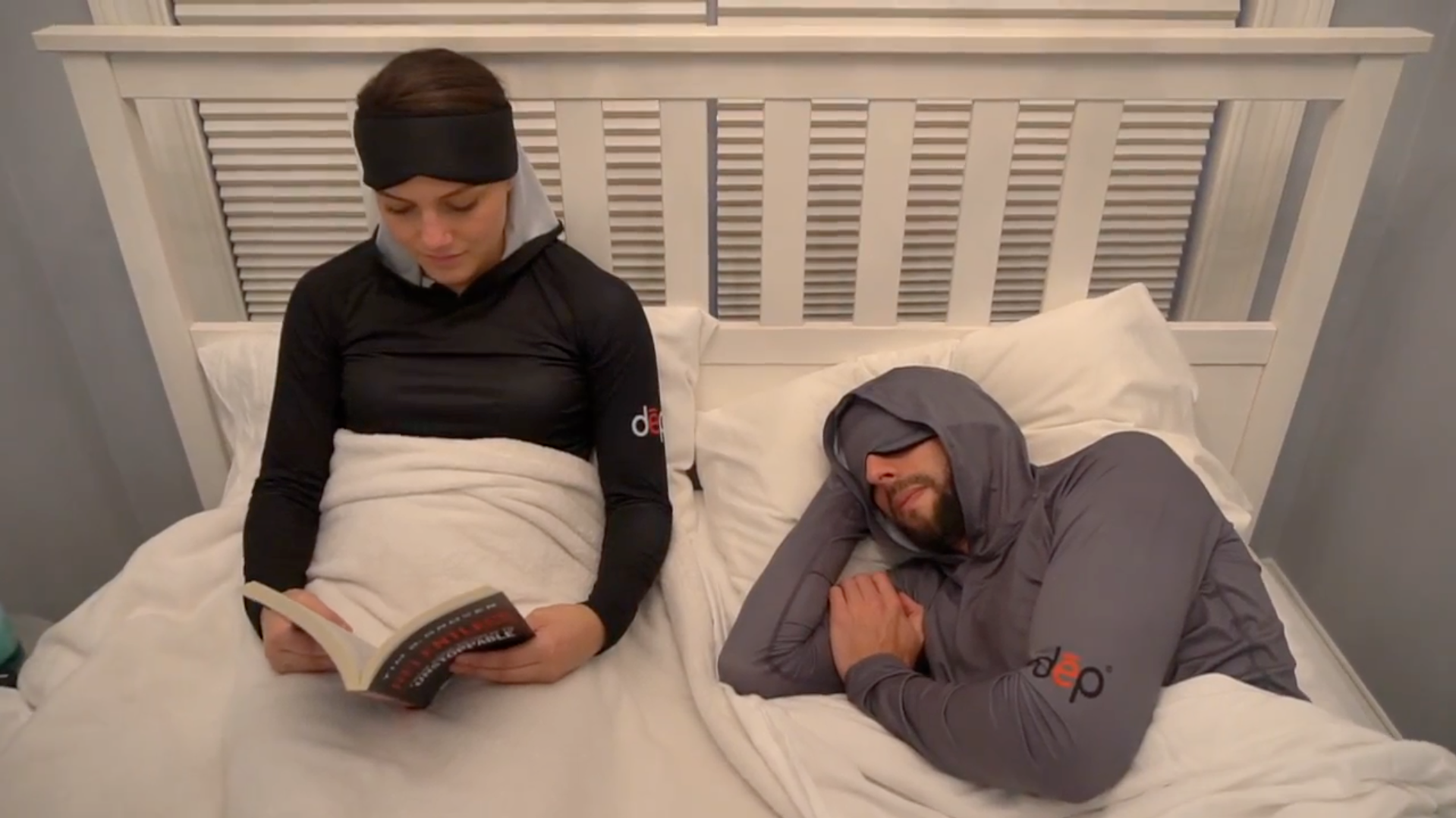
Try it Risk Free
Wear it for 30 days. If you don't love it, ship it back for a full refund.
Frequently Asked Questions
What size Dēp Slēpwear is best for me?
For best results, all Dēp Slēpwear should fit somewhat close to the skin. That said, for Dēp Sleep Hoodies, we generally recommend ordering your t-shirt size. For Dēp Sleep Shorts, order your normal shorts size. If you are between sizes, get a size down from your normal size. You can take a look at the Size Chart links on the product pages if you'd like to see detailed dimensions for each size.
What materials is Dēp Slēpwear made from?
Dēp Slēpwear is constructed of a lightweight blend of performance polyester and elastane. This blend is used specifically to promote better sleep naturally in three main ways: 1. Active temperature regulation 2. Moisture wicking 3. Frictionless movement
Do I need to wash these differently than regular pajamas?
The moisture-wicking fabric is designed for durability with normal care. Machine wash cold with similar colors and tumble dry low. Avoid fabric softeners, which can reduce the moisture-wicking properties. The fabric maintains its performance characteristics through many wash cycles, making these dorm pjs practical for regular use in college laundry facilities.
How can I block out my roommate's snoring?
Roommate snoring can reach 50-100 decibels, making it nearly impossible to sleep. The Dēp Slēpwear hood design muffles ambient noise, including snoring, by creating an acoustic barrier around your ears. While it won't eliminate noise completely (you'll still hear your alarm), it significantly reduces irregular, disruptive sounds. Combining the hood with white noise creates a powerful defense against sleep-disrupting sounds.
What pajamas are best for college students?
The best college dorm pajamas address the specific challenges of shared living: light blocking, noise reduction, temperature regulation, and freedom of movement. Look for moisture-wicking, smooth fabrics that glide over bedding and help regulate body temperature. The Dēp Slēpwear hoodie's patented design includes an integrated eye mask and noise-muffling hood—features specifically engineered for challenging sleep environments like dorms and shared apartments.
How does sleep affect academic performance?
Sleep is when your brain consolidates memories and processes information from the day. Students who get adequate sleep (7-9 hours) show significantly improved test scores, better information retention, enhanced critical thinking, and more effective problem-solving compared to sleep-deprived peers. Even losing one hour of sleep can impair cognitive function equivalent to a significant drop in IQ points.
Can pajamas really help me sleep better?
Yes. Your sleepwear creates your microenvironment for eight hours every night. The wrong pajamas can trap heat, restrict movement, bunch up, and fail to protect you from light and noise. The Dēp Slēpwear hoodie isn't ordinary sleepwear—it's patented technology that blocks light with an integrated eye mask, muffles noise with hood design, regulates temperature with moisture-wicking fabric, and allows natural movement with ultra-smooth material. Students consistently report improved sleep quality and faster time to falling asleep.
How do I deal with light in my dorm room at night?
Light exposure suppresses melatonin production and disrupts your circadian rhythm, making it difficult to fall asleep and stay asleep. The built-in eye mask in Dēp Slēpwear blocks light completely without the discomfort or slipping of traditional sleep masks. It stays in place throughout the night, protecting you from roommate screens, hallway lights, and early morning sun. Combine it with blackout curtains or a draft stopper under your door for maximum darkness.





